Interested in golden pheasants? In this post, you’ll learn 30 golden pheasant facts, including habits, diet, chicks, lifespan, pets, range, and more. Plus lots of photos and videos.
Table of Contents
30 Golden Pheasant Facts
One of the most beautiful birds in the world, the highly intelligent golden pheasant (Chrysolophus pictus), sometimes referred to as the Chinese pheasant, is popular with aviculturists because of its spectacularly brilliant plumage.
Native to the mountains of China, its cold hardiness adds to the appeal. Here are 31 Golden pheasant facts you’ll want to know about this exotic breed.
1. What does a golden pheasant look like?
As in many bird species, the male golden pheasant is the flashy one and looks like a kid picked as many of his favorite crayons as he could to color it. Females are a dull brown with a mottled appearance and a lighter head.
Males grab all the attention with their bright golden head and red-tipped crest, and vivid scarlet breast.
- The “cape” or ruff is cinnamon with dark edges which gives it a striped appearance.
- Their upper back is green; their wings are dark brown and very dark bluish, and their rump is golden.
- The tail is barred in light and dark brown.
- Their eyes, beaks, and feet are pale yellow.
Watch on YouTube
2. How big is a golden pheasant?
The male golden pheasant averages 43-44 inches (109-111 cm), while females only average about 26 inches (66 cm), but two-thirds of their length is in their magnificent tail.
3. How much does a golden pheasant weigh?
About 630 grams (1.4 lbs).
4. What is the golden pheasant’s wingspan?
The wingspan is around 70 cm or about 27.5 inches.
5. Do golden pheasants fly?
Yes, but golden pheasants are clumsy fliers and can only manage short, fast bursts of flight. Because of their long tails and short wings, they are not suited to longer flights; they can, however, run fast.
6. Are golden pheasants aggressive?
The golden pheasant is not particularly aggressive to non-competing species and relatively easy to tame if you proceed with patience.
On occasion, a cock bird may become aggressive toward its hen, even killing her. Thankfully this is rare.
7. How long do golden pheasants live?
Like many things, it depends. In the wild, two-thirds will not survive 6 to 10 weeks. Only 2-3% will make it to three years. In the wild, their lifespan can be 5 or 6 years.
They last much longer in captivity, and with proper care, 15 years is common, and 20 years is not unheard of.
8. Do golden pheasants make good pets?
Enthusiasts will tell you “Yes!,” but that’s because they are enthusiasts. You will need at least 20 square feet of space per bird.
Goldens are notorious for flying off, so you must place netting over the pen. They also like to dig their way out, so fencing should go 20″ into the ground.
Those who say they are easy to tame probably started with hatchlings spent a lot of time with them and frequently bribed them with unsalted peanut pieces.
They are even a good choice for beginners. They are hardy, and cold and heat tolerant, easy to tame, and will definitely impress your friends.
Watch on YouTube
They do not require a lot of space but are quite lively and energetic. Owners will tell you though that they can be addictive and before long you will find yourself with a flock of them.
So as long as you give them what they need, they can make great pets.
9. How long have golden pheasants been kept in captivity?
In its native China, the golden pheasant has been kept in captivity at least since the 1700s.
The first mention of them in captivity in America was in 1740 and, according to some, George Washington had some at Mount Vernon.
Also, legend has it that during their Golden Fleece quest, the Argonauts brought some of these golden birds to Europe 1,000 years BC.
10. Can you keep golden pheasants with chickens?
It’s not a good idea. Chickens carry a lot of diseases they are immune to, but pheasants are not.
You should not even put them in an area that previously housed chickens. You should also keep them away from grouse who have a nasty tendency to bite off their upper beak.
11. Can you eat golden pheasants?
Yes, but it’s probably not the best. They are most prized for their beauty, and, besides, it would be an expensive meal. Breeding pairs often sell for over $200. Even if you are breeding them yourself, you’d be better off selling them and then eating in a fancy restaurant.
Wild pheasants tend to be lean, and that means the meat will tend to be dry. You can adapt chicken or game bird recipes; braising is suggested and be sure to use a sauce. The taste will depend on what the bird has been eating. One forum poster described the taste as, “… disgusting. He tasted like dirty socks smell…”
On a side note, a Golden Pheasant is a cocktail made with eggs, sugar, vodka, lemon juice, and cream soda.
12. Can you eat the eggs of golden pheasants?
Yes. Golden pheasant eggs are similar to duck eggs but less rich and a little gamey.
13. What eats a golden pheasant? Predators and threats
Humans, dogs, foxes, wildcats, and dogs all prey on golden pheasants, and some smaller critters like to eat their eggs.
14. Is the golden pheasant in danger of extinction?
Currently, the golden pheasant is evaluated as “Least Concern.”
Though the population tends to be decreasing the decline is not sufficient to move it into the “Vulnerable Range,” according to the Important Bird and Biodiversity Areas (IBA) Programme of BirdLife International. The pheasant has a large range, but it is under some pressure due to deforestation.
15. What is the habitat of the golden pheasant?
Prolonged exposure to bright sunlight can fade their intense coloration, so their natural habitat is dense, shadowy woodlands and forests with sparse undergrowth in the mountains of Asia.
They are primarily ground-dwelling foragers during the day but roost in tall trees at night.
Though native to China, feral populations have been naturalized in the UK and other parts of Europe, North and South America, Australia, and New Zealand. Conifer forests are their preferred habitat.
16. What do golden pheasants eat?
Because golden pheasants are foragers and move slowly while pecking around the forest floor for food, their diet consists of seeds, berries, grain and other vegetation including shoots of rhododendron and bamboo, as well as grubs, spiders, and insects.
Early in the morning and late in the afternoon is their typical feeding time.
17. What is the golden pheasants Latin name?
The golden pheasant’s Latin name is Chrysolophus pictus. They are just one of 175 species or subspecies of pheasants.
Its common name is Chinese pheasant, golden pheasant, or painter pheasant, and when in captivity is referred to as the red golden pheasant.
18. What other names does the golden pheasant have?
Golden pheasants are also known as Chinese pheasants, golden pheasant, or painter pheasant.
19. Do golden pheasants mate for life?
Nope. In the wild, the cock may mate with several hens. Breeders can provide roosters with harems of 10 or more hens depending on space and conditions.
Watch on YouTube
Learn about birds that do mate for life.
20. What is the mating ritual of the golden pheasant?
The female visits the male’s territory in response to his crowing. The male golden pheasant struts around and fluffs his ruff to attract the female.
If the female is unimpressed and starts to leave, the male will run circles around her attempting to block her departure.
Once she stops, he goes into full display mode, fanning his cape and showing off his beautiful gold rump and splendid tail until he convinces her he’s a good bet.
21. At what age do golden pheasants mate?
Females mature faster than the males and are ready to mate when they are one year old. Males may be fertile at one, but at two years of age they’ll reach maturity.
22. When and where do golden pheasants nest?
Breeding and egg-laying usually take place in April.
Golden pheasants nest on the ground in areas such as tall grass or dense bushes and brush where the female’s protective coloring provides good camouflage. The hen lines a shallow depression in the ground with grass and various vegetation and will lay between five and twelve eggs.
She sits continuously on the clutch, surviving on dew and raindrops until the light beige eggs hatch in a little over three weeks.
23. What do golden pheasant chicks look like?
Cute, like most baby critters. Golden pheasant chicks emerge from there shells covered in reddish-brown and buff-colored down.
They are precocial, that is they hatch relatively mature and mobile, and immediately follow their mother around and begin to peck for food.
24. When do the chicks fledge? What is fledging?
Golden pheasant chicks fledge, otherwise known as developing wing feathers adequate for flight, around two weeks of age.
25. When can you determine the sex of golden pheasant chicks?
Male golden pheasants do not mature completely and achieve their full coloration until they are two years of age, although they may be fertile at one year.
If you don’t want to wait that long to determine the sex, check their eyes. Chicks start out with brown eyes, and the females retain this brown color, but the males’ eyes gradually lighten to bright or pale yellow or almost white.
The terminology for pheasants by age is:
- Baby pheasant is called a chick.
- 6-12 months of age, they are juveniles.
- 1 to 2-year-olds they are yearlings.
- Over 2 years of age, they are breeders.
26. What is the golden pheasant’s call?
Their sound is often described as “chack chack,” and during mating season the males have a metallic call. You can listen for yourself here.
27. Are there superstitions about golden pheasants?
Some people believe that you’ll get 3 wishes if you capture a golden pheasant.
The Chinese consider them to be a sign of prosperity and good luck.
28. Are there hybrids of the golden pheasant?
The Golden Pheasant is frequently cross-bred with the Lady Amherst Pheasants. These offspring can be distinguished from pure Goldens because their feet will be olive colored rather than yellow.
There is also a variety of yellow golden pheasants that is mostly yellow, and lack the brilliant reds, blues, and greens. In captivity, the naturally occurring variety is referred to as Red.
29. Where do golden pheasants live?
Golden pheasants are native to the forests of western China (hence the name, Chinese pheasants).
In addition, feral populations exist in many countries, including the United Kingdom, Canada, United States, Mexico. They are also established in numerous European and South American countries.
30. Where can I see a golden pheasant?
They are a very popular variety due to their eye-catching plumage and are frequently found in zoos and aviaries.
You might also have a pheasant breeder in your area that would be happy to let you see his stock and listen to his sales pitch.
Rainbow Pheasants
Have you seen a golden pheasant before? What was your favorite fact? Did we miss one? Join us in the comments below!
Drew Haines is an animal enthusiast and travel writer. She loves to share her passion through her writing.
She graduated high school at sixteen and started her own business, Everywhere Wild Media. And she runs Everywhere Wild and JustBirding. She also guest blogs on Storyteller.Travel
She lived in Ecuador for 6 years and explored the Galapagos Islands. Currently based in N.S., Canada.

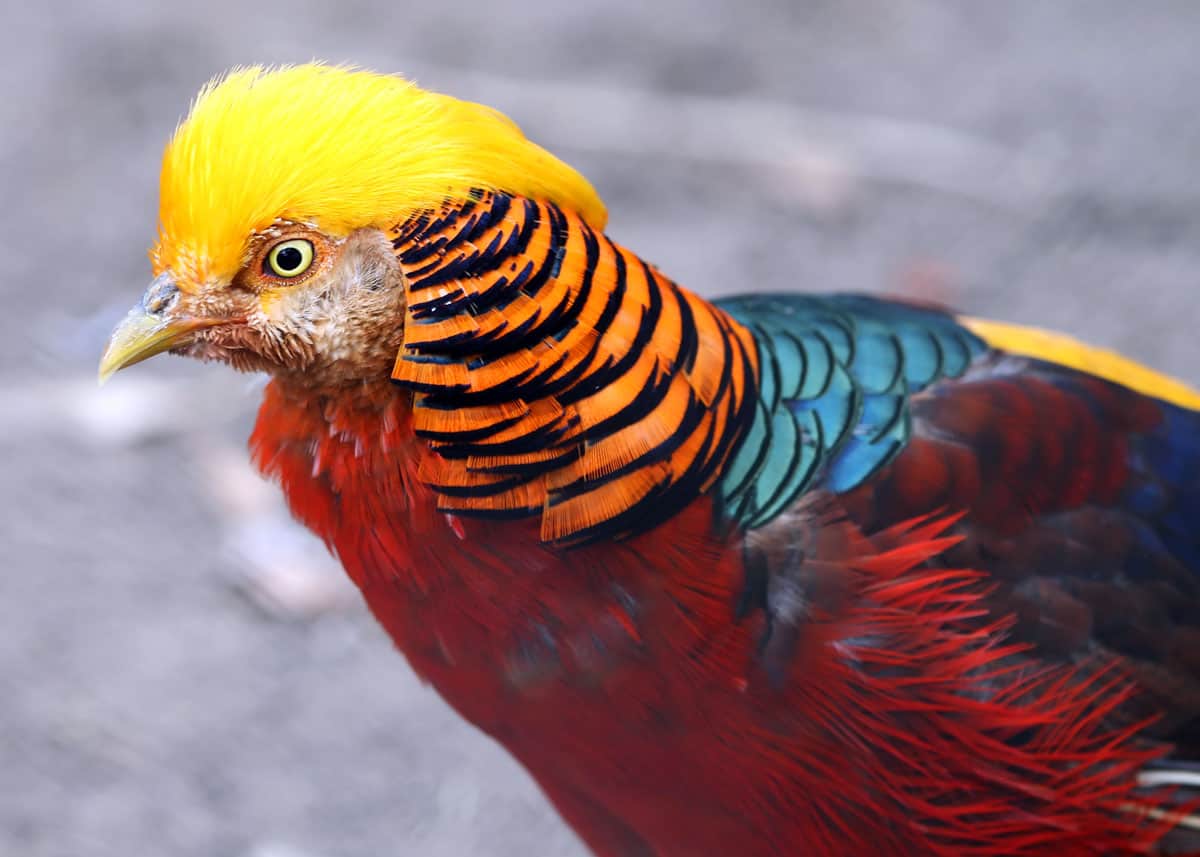
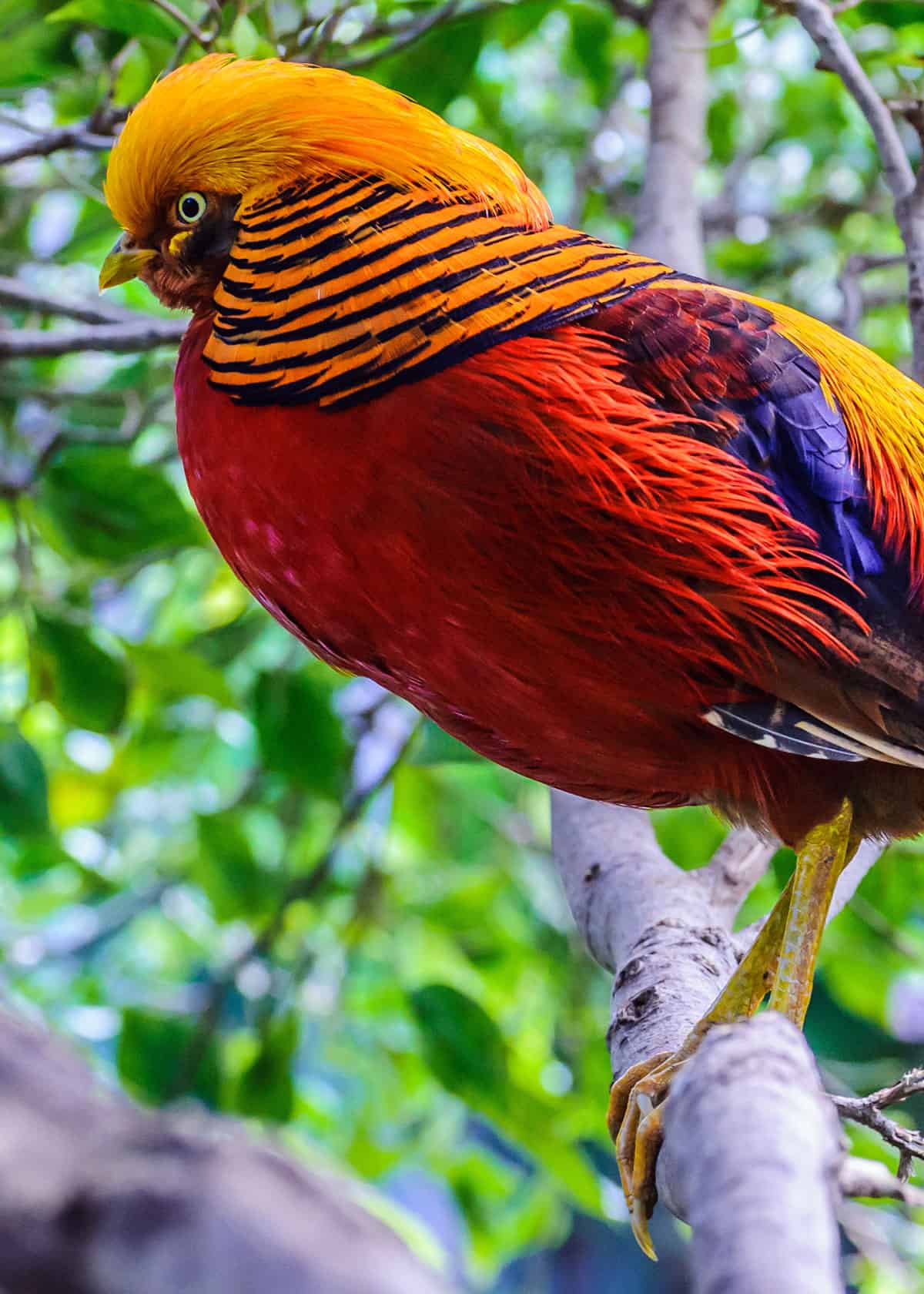
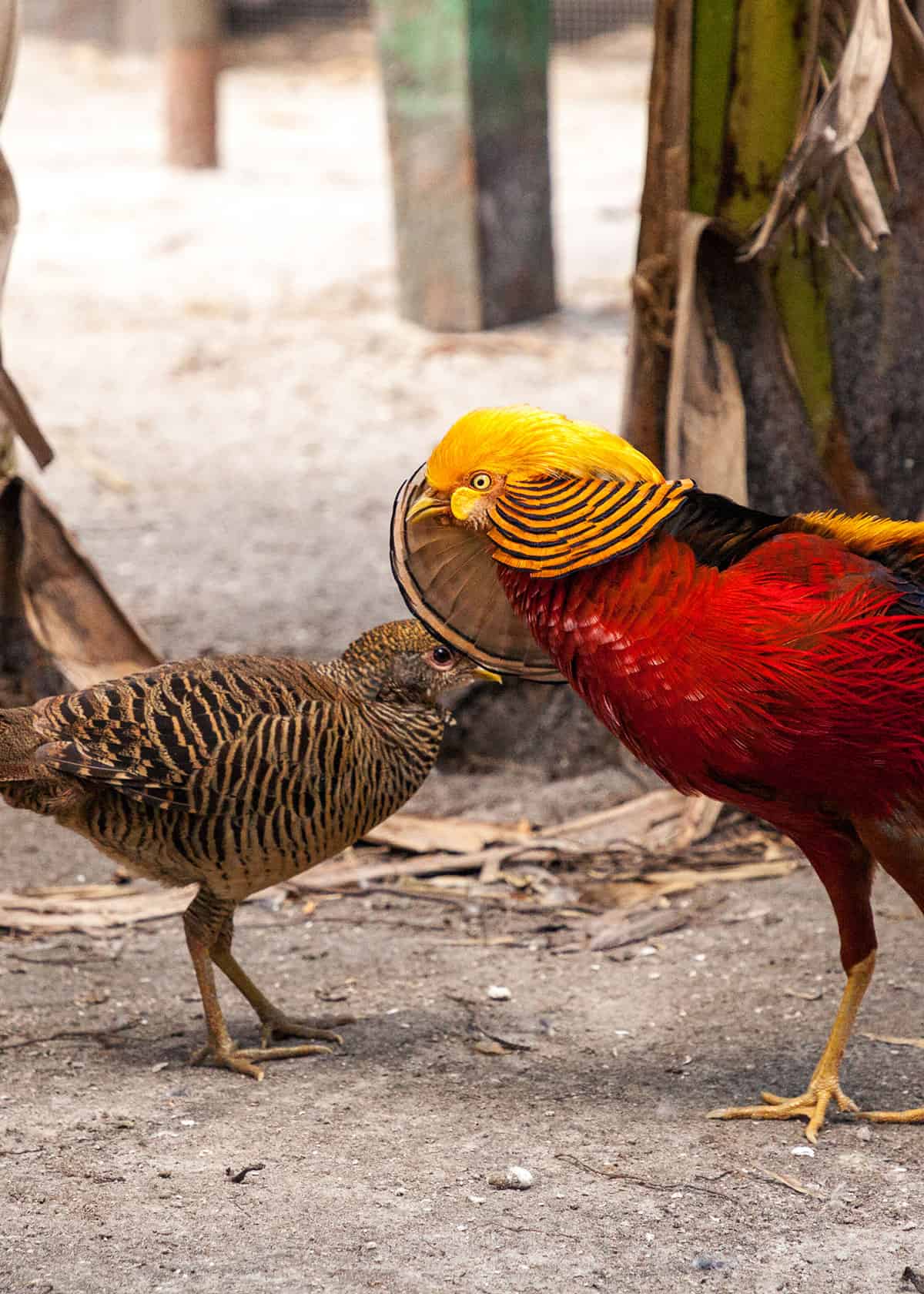
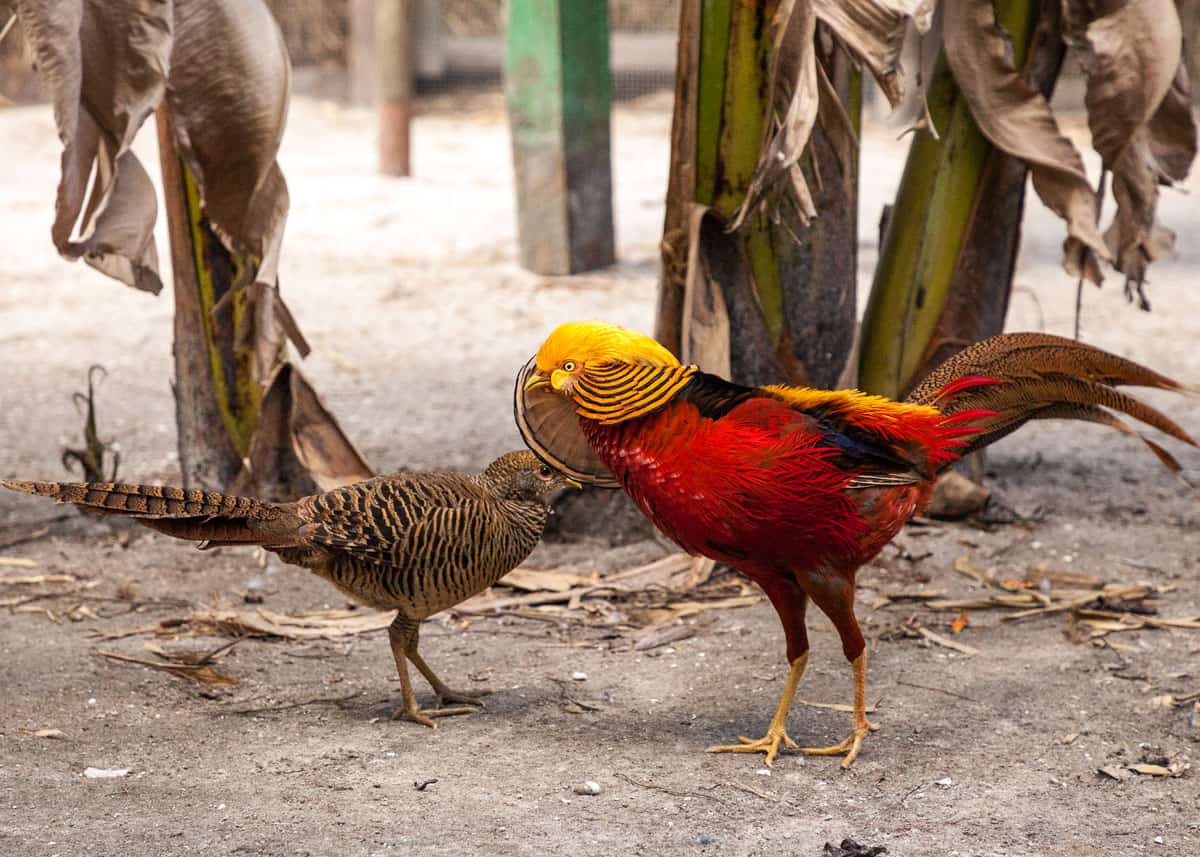
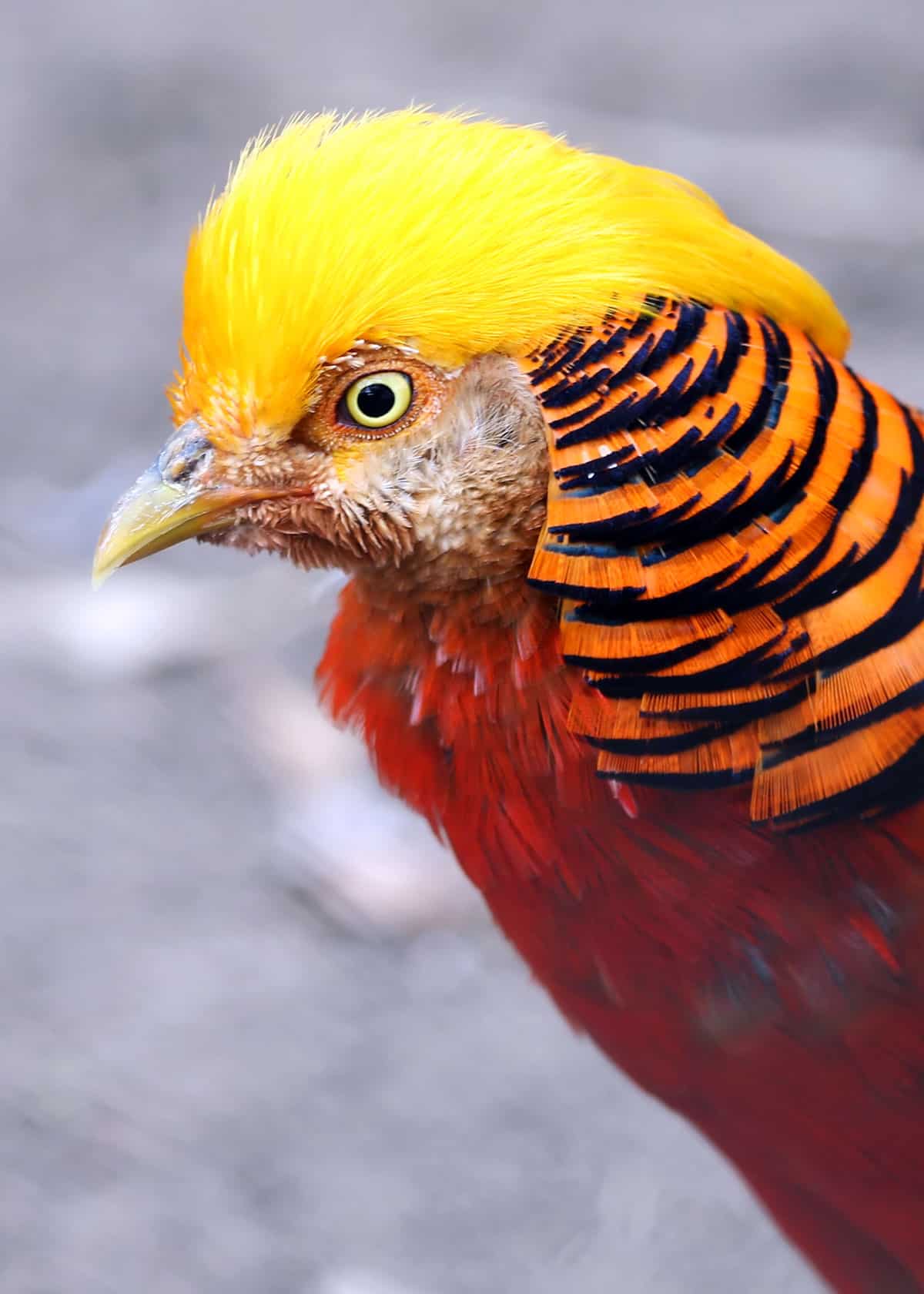
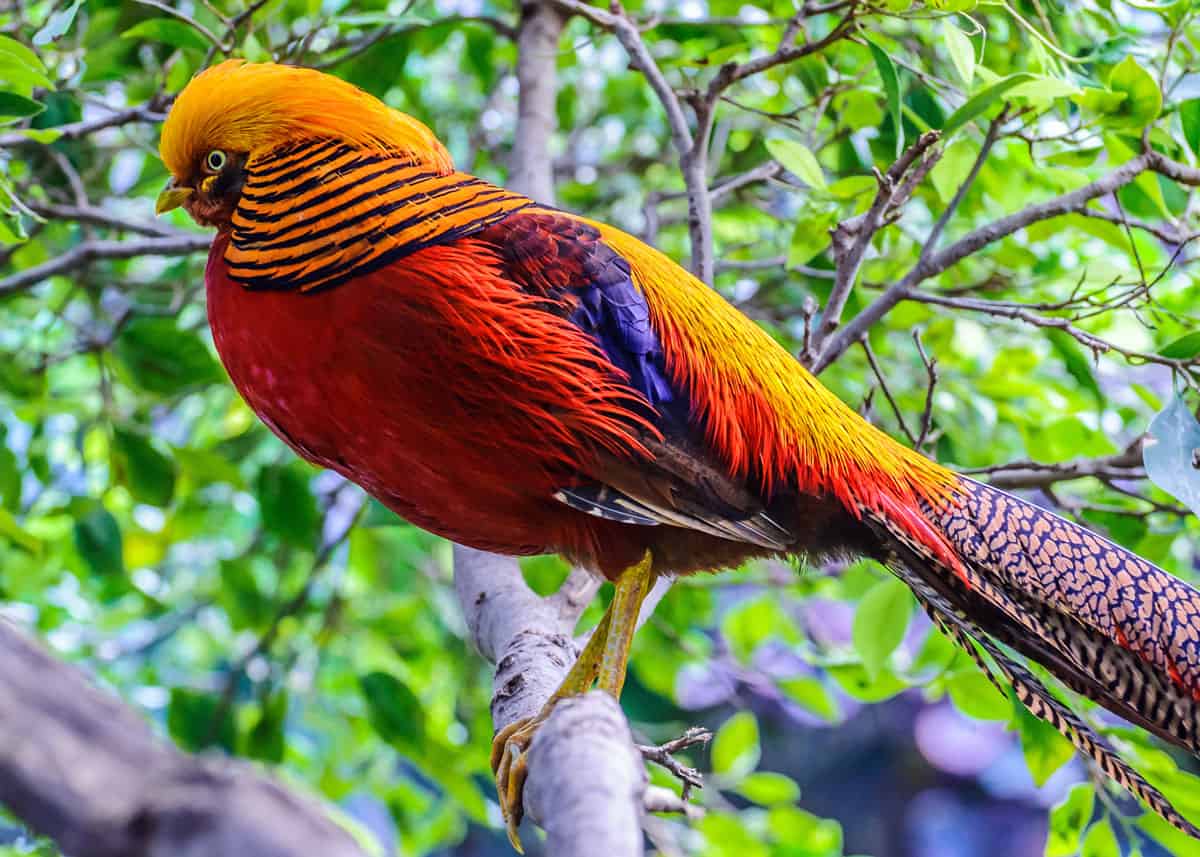
Ray Wages II
Friday 28th of April 2023
I spotted a male golden pheasant in our yard last week in Deltona and Osteen in Florida.
Waseem
Saturday 9th of January 2021
It's my first year of keeping these beauty. The article was interesting and help full.
Paula
Friday 21st of June 2019
I have been raising these pheasants for last 3 years with great success though this year for the first time the male lost all his tail feathers, I understand molting but thought it would be one feather at a time, he acts perfectly normal and is still not slowed his breeding efforts but I wonder why all the feathers came out and how long does it take them to grow back.
Agromenoreh
Sunday 26th of May 2019
So beautiful bird & thanks for articel. We are trying to breed this bird in Indonesia
Terry Vincelette
Wednesday 11th of May 2022
@Agromenoreh, my husband has been breeding the golden pheasants for 3 years & enjoying them so much! We have 2 females & 2 males & the 2 females are still laying eggs in May. They love feeding time - we give them seed, lettuce, strawberries, bananas & blackberries every morning. Would love to send pictures! Our female’s don’t know how to hatch their eggs & husband has been putting them in an incubator & no problem, moving the babies to a small enclosed area with food & water in our living room & move outside when they are older. They are 4 loved & spoiled golden pheasants!❤️❤️